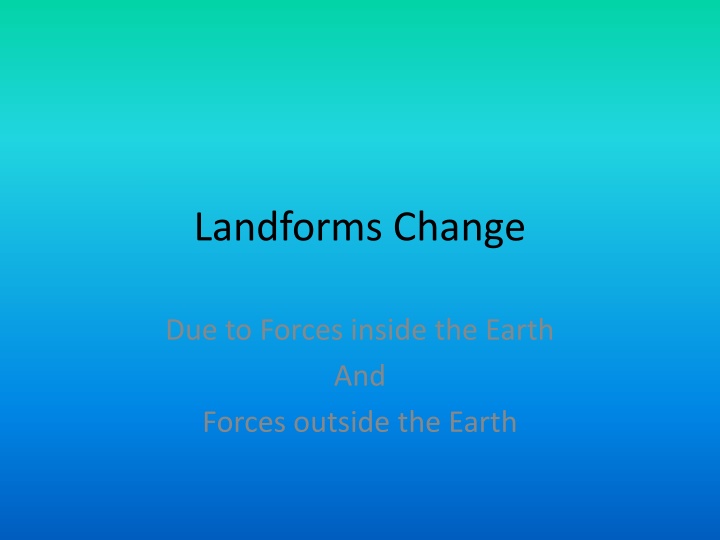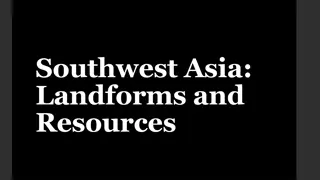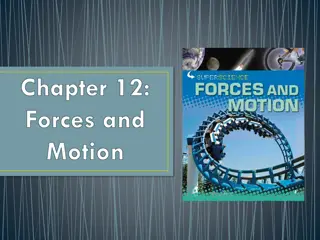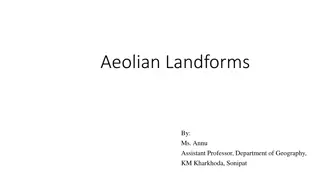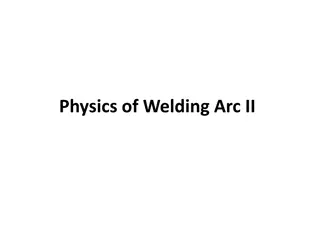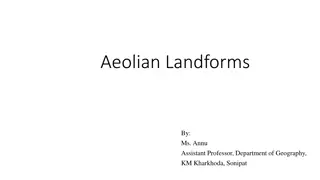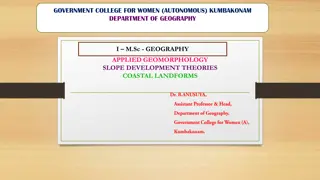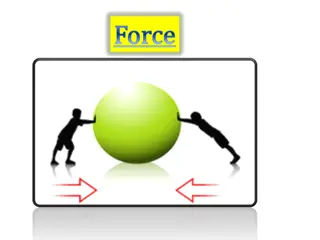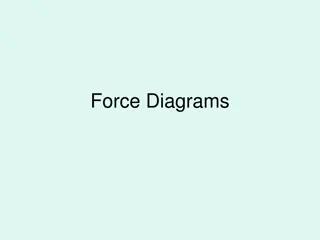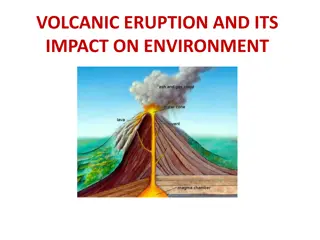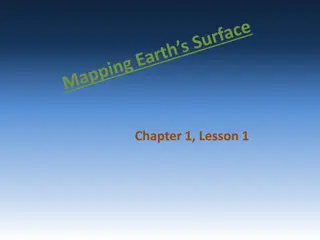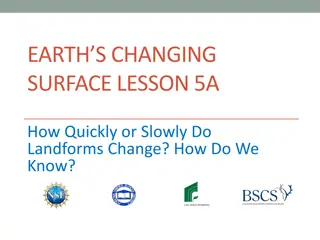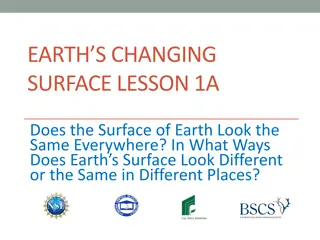Forces Shaping Landforms: Inside and Outside the Earth
Explore how landforms change due to forces inside the Earth, like plate boundary activity forming fold mountains, and forces outside the Earth, such as the creation of oceanic trenches. Discover the formation of fold mountains like the Alps and Rockies, as well as deep oceanic trenches like the Mariana Trench in the Pacific Ocean. Understand the processes of subduction, collision of tectonic plates, and the geological features that result from these dynamic forces.
Download Presentation

Please find below an Image/Link to download the presentation.
The content on the website is provided AS IS for your information and personal use only. It may not be sold, licensed, or shared on other websites without obtaining consent from the author.If you encounter any issues during the download, it is possible that the publisher has removed the file from their server.
You are allowed to download the files provided on this website for personal or commercial use, subject to the condition that they are used lawfully. All files are the property of their respective owners.
The content on the website is provided AS IS for your information and personal use only. It may not be sold, licensed, or shared on other websites without obtaining consent from the author.
E N D
Presentation Transcript
Landforms Change Due to Forces inside the Earth And Forces outside the Earth
LANDFORMS ASSOCIATED WITH PLATE BOUNDARY ACTIVITY Forces Inside the Earth
FOLD MOUNTAINS upland areas formed by the buckling of the earth's crust - associated with convegence boundaries (destructive and collision margins) Fold mountains at destructive margins occur where oceanic crust is subducted underneath the continental plate, forcing the over- riding plate to crumple and uplift - the resulting folding and faulting results in the formation of a mountain chain roughly parallel to the oceanic trench - e.g. the Andes Mountains. Fold mountains at a collision zone occur as the colliding plates resist subduction and uplift occur with folding and faulting - e.g. the Himalayas.
Fold Mountains The Alps an example of a range of fold mountains. The Rockies, America Fold Mountain Mount Everest, part of the Himalayan mountain range is young- fold mountain range. It is formed when the Eurasian and Indian tectonic plates collided 30 to 50 million years ago. How are fold mountains formed? Fold mountains are formed when two continental plates move towards each other or a continental plate move towards an oceanic plate. The movement of the two plates forces sedimentary rocks into a series of folds. Fold mountains are usually formed from sedimentary rocks and are usually found along the edges of the continents. When plates collide, the accumulated layers of rock crumple and to from a series of fold mountains.
OCEANIC TRENCHES These are often found in a linear pattern located just offshore; Deep oceanic trenches form at destructive margins where oceanic lithosphere is subducted into the asthenosphere below; the long and narrow oceanic trenches are formed during and mark the place where the ocean floor is deepest (about 10km below sea level) Example - the collision of the Nazca plate and South American plate has produced the Peru- Chile deep sea trench off of the west coast of South America
Ocean Trenches The Pacific Ocean houses the Marianas Trench, the lowest point on Earth. The U.S. commonwealth of the Northern Mariana Islands made up of 14 islands that span 183 square miles (475 square kilometers) in the North Pacific Ocean was designated the U.S. Mariana Trench Marine National Monument in January 2009. Formed by underwater volcanoes, the southernmost of these islands have some of the oldest coral reefs along the island chain. The reef off of Saipan Island is the most diverse.
ISLAND ARCS like oceanic trenches, these tend to form a linear pattern, although one which is "arc-shaped"; an island-arc is a chain of volcanic islands that form at a destructive boundary where there is the convergence of two oceanic plates; during subduction, the subducting plate is melted (due to interior heat, friction and pressure) and creates a magma source; the light, less dense magma rises to the surface and erupts to form sub-marine volcanoes eventually these volcanoes grow through successive eruptions to above the height of sea-level forming a chain of volcanic islands which is known as an island-arc.
Island Arcs Japan is an arc-shaped island arc composed of volcanoes off the Asian mainland The Aleutians are a volcanic island arc, built by magmas welling up from the subducted crust of the Pacific plate. Mount Cleveland - Cleveland Volcano in the Aleutian Islands
OCEAN RIDGES These are underwater mountain ranges which develop where divergence takes place (as two plates move apart) Ocean ridges, occur in a linear pattern, usually through the middle of oceans (e.g. the Mid-Atlantic Ridge) As magma rises at this point (the rising limb of a convection cell), the rising magma causes the lithosphere to dome up creating the ridge and where tensional forces, creates weaknesses in the crust, magma erupts forming volcanoes which further build up the ridge; The East-Pacific Ridge is an anomaly from the pattern of mid-ocean ridges - which can be explained by the fact that the rising limb of the convection cells in the asthenosphere is located in this position;
